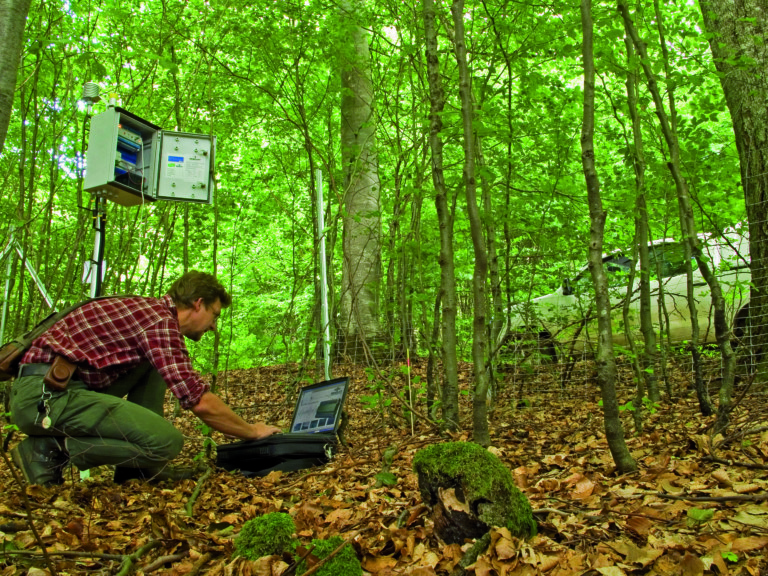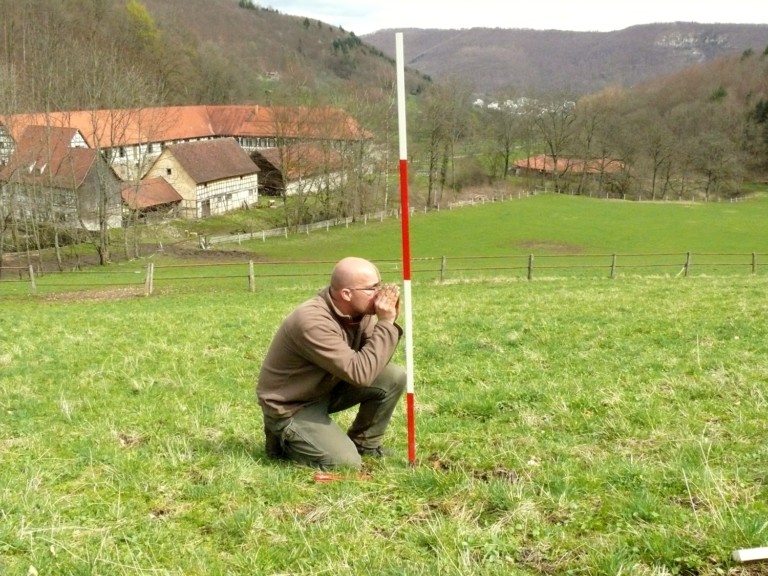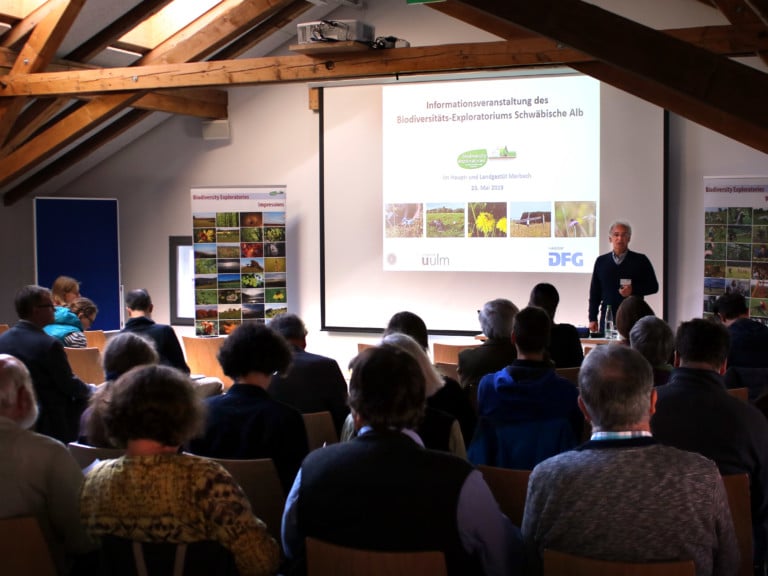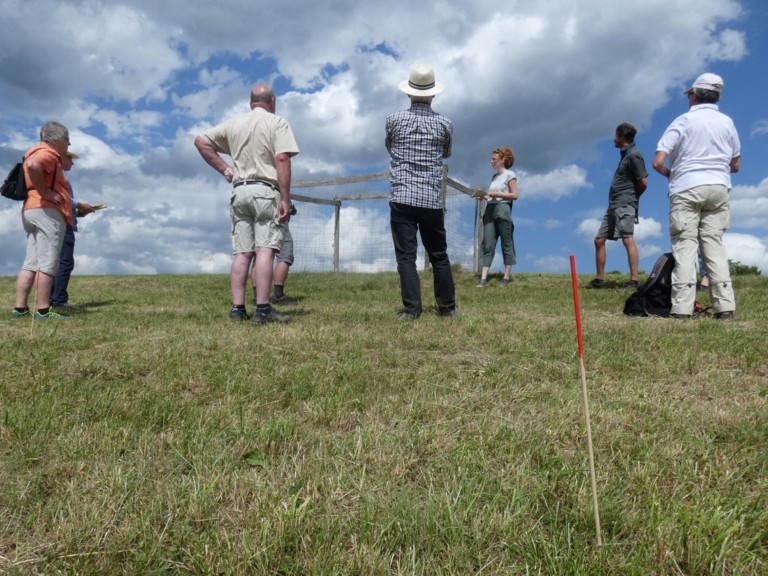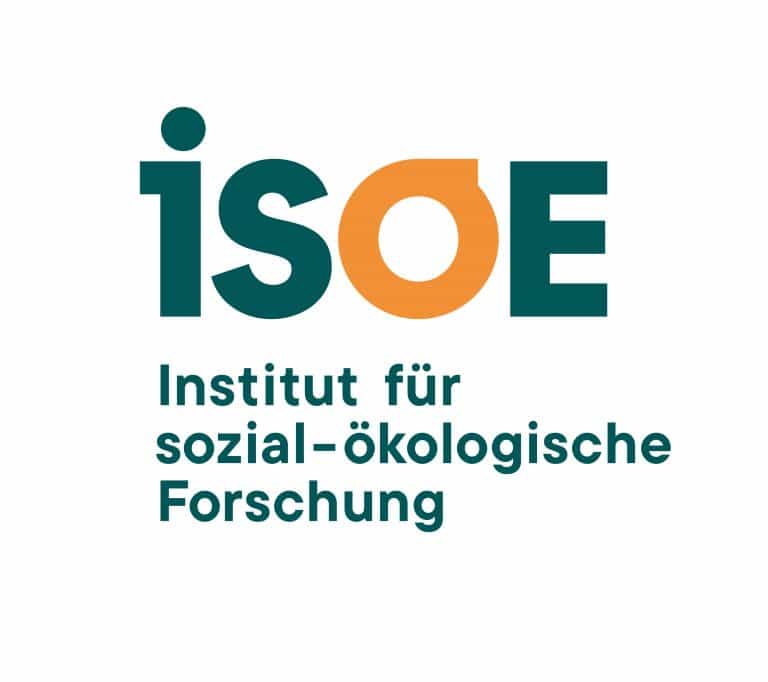Local Management
Core Project 2 – The so-called Core Projects of the Biodiversity Exploratories (BE) emerged from the on-site project selection and the establishment of the exploratories (2006-2008), and have been providing the infrastructure since 2008.
In each of the three exploratories, a local management team (LMT) ensures that research activities run smoothly. For example, research activities are coordinated with landowners and land managers as well as the authorities, and the experimental areas are maintained.
There are five contact persons for these tasks in each LMT. The local manager is responsible for coordination and obtaining permits from the authorities and landowners. They becomes are also responsible for public relations in the region. Technicians who manage the plots in grassland and in the forest are responsible, among other things, for the construction and maintenance of the trial areas and for consultation with stakeholders from the forestry and grassland sectors. The measurement engineer is responsible for the construction and maintenance of the climate stations. Finally, the general technician assists in the maintenance of the experimental plots and in individual research activities.
Research groups may contact the LMTs with any fieldwork concerns. During the proposal writing phase, for example, questions about the feasibility of planned research activities can be clarified. During fieldwork, LMTs provide updates on experimental plots and coordinate announced fieldwork with landowner(s). In addition, the LMTs can assist in setting up and carrying out fieldwork.
The LMTs also provide data on land-use intensity in forests and grasslands and a variety of climatic parameters-important baseline information for all Biodiversity Exploratory research projects.
Furthermore, LMTs are responsible for disseminating research results. Therefore, the latest findings are made available to a wider audience at press events and field trips. Land owners and managers are informed about the results on their own land in clearly prepared brochures. In addition, every two years each exploratory hosts a major information event for landowners, authorities and stakeholders in the region. Here, researchers from the exploratories themselves give an insight into their projects and present the results of their research of the past years.
The LMTs are thus an important interface between researchers and landowners, but also between science and the interested public.
Public Datasets
Non-public datasets

Schorfheide-Chorin Exploratory
Schorfheide-Chorin Exploratory
Senckenberg – Leibniz Institution for Biodiversity and Earth System Research
Senckenberg Biodiversity und Climate Research Centre
Schorfheide-Chorin Exploratory Office
Hoher Steinweg 5-6
16278 Angermünde
Schorfheide-Chorin Exploratory Field Station
Zur Kastanienallee 10
16278 Angermünde/OT Wolletz
Contact:
explo.sch@senckenberg.de
Phone: +49 (0) 3331 296 891 (Office Angermünde)

Hainich-Dün Exploratory
Hainich-Dün Exploratory
Technical University of Munich
Chair for Terrestrial Ecology
Hainich-Dün Exploratory Field Station
Am Burghof 3
99991 Unstrut-Hainich - OT Mülverstedt
Contact:
explo.hai.toek@ls.tum.de
Phone: +49 (0) 36022 159 843

Schwäbische Alb Exploratory
Schwäbische Alb Exploratory
Technical University of Darmstadt
Department of Biology
Schwäbische Alb Exploratory Field Station
Biosphärenallee 3
72525 Münsingen
Kontakt:
explo.alb@uni-ulm.de
Phone: +49 (0) 731 502 2668
Phone field station: +49 (0) 7381 182 386
